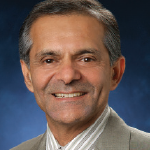
garagestock/shutterstock.com
May is National Arthritis Awareness Month. The ACR is committed to ensuring that arthritis and rheumatologic diseases are at the forefront of public awareness—and that better, safer treatments reach Americans in need. Fortunately, the federal government is also doing its part and has just released a major report on the national impact of arthritis.
A Growing Public Health Concern
In March 2017, the Centers for Disease Control and Prevention (CDC) released its Vital Signs Data on Arthritis in America and the Morbidity and Mortality Weekly Report (MMWR) on the prevalence of doctor-diagnosed arthritis and arthritis-attributable activity limitation in United States, 2013–2015.1,2 Both reports are multifaceted, but the findings are profound in that the burden of arthritis is increasing.
Arthritis is common, expensive and a leading cause of disability. Arthritis causes joint pain, swelling and stiffness, whose negative impact on lives can levy a severe physical and emotional toll on patients. Arthritis prevalence is on the rise in the U.S., with nearly one in four adults (or 54 million) Americans now living with doctor-diagnosed arthritis and 24 million Americans experiencing limitation in their activities because of their disease. About 32 million (or 60% of) adults with arthritis are of working age (18–64 years) and have lower employment than those without arthritis. The economic impact is staggering. Arthritis costs at least $81 billion in direct medical costs annually.
According to the CDC, one in three adults with arthritis is inactive. This is unfortunate, not only because of the cognitive costs of stagnancy, but also because physical activity can decrease pain and improve function by about 40%. Therefore, it is vital that both patients and doctors understand the benefits of physical activity. Even low-intensity activities, such as swimming, biking, yoga, tai chi or walking, can help maintain and improve strength, flexibility and endurance. Multiple studies have shown that arthritis patients who exercise regularly have less pain, more energy, improved sleep and better day-to-day function.
Approximately half of all adults with heart disease or diabetes have arthritis, as do one-third of adults with obesity. Concomitant arthritis makes managing these conditions difficult. Physical activity helps manage all these conditions. According to CDC estimates, physical activity programs can reduce yearly healthcare costs by about $1,000 per person. Although physical activity is not a cure, in conjunction with treatment by a rheumatologist or rheumatology health professional, regular exercise and maintaining a healthy body weight can reduce joint pain and improve quality of life for patients.
This message needs to reach our patients. Adults with arthritis are more likely to attend a self-management education program and exercise when recommended by a healthcare provider. Educating our patients is critical.
The new arthritis prevalence numbers from the CDC—as well as the arthritis management approaches promoted by the report—are particularly salient at a time when specialized rheumatology care is at a high premium in the U.S.
Demand for Arthritis Care Outpaces Supply
While the demand for arthritis care continues to grow, the ACR’s latest workforce study shows that the pool of practicing U.S. rheumatologists is shrinking.3 The percentage of adults limited by arthritis has increased by nearly 20% since 2002. As our population grows and ages, the numbers affected with arthritis will increase also. The CDC estimates that by 2025 about 67 million Americans will have arthritis and the number will grow to 78 million by 2040. These are sobering projections.
The ACR workforce study paints a stark picture, with a shortage of 3,800 rheumatologists in the U.S. by 2025. The demand for rheumatology care will exceed supply by 138% for adult rheumatologists and 61% for pediatric rheumatologists by 2030. What is driving the rheumatology workforce shortage? In a word, demographics. Just about half of all current rheumatologists are baby boomers, and most will retire in the next two decades. So-called regional maldistribution also plays a role, because the overall adult-to-physician ratio varies widely by geographic location.
ACR at Work
Given the CDC’s projected rise in the number of arthritis patients and the ACR’s anticipated drop in the relative supply of rheumatologists, inaction is not an option. The ACR is committed to ensuring a thriving rheumatology workforce to care for the growing number of Americans living with arthritis and rheumatologic diseases. It is imperative that all of us in the medical community—and especially those in the field of rheumatology—make our voices heard.
Congress has the power to raise the caps on the number of federally funded rheumatology training positions, ensure loan forgiveness for new rheumatologists and expedite the review process for international physicians to work in the U.S. But legislators will not take action unless we do—which is why ACR volunteer leaders will travel to Washington, D.C., this month to meet with our lawmakers and ask for their support in advancing common-sense solutions to the workforce shortage.
Through our public awareness campaign, Simple Tasks, the ACR is focused on educating the public about arthritis care and the critical role of rheumatologists and rheumatology health professionals in helping patients manage their disease, as well as telling the story of how the current rheumatology workforce shortage affects our profession and the patients we serve. The College has also declared September Rheumatic Disease Awareness Month (RDAM) to raise awareness about rheumatic diseases. We will continue to promote this public awareness effort this year, with the support of a celebrity spokesperson in September.
If there is one thing our members should take away from this column it is this: There is a lot of work to be done, but change and success are possible if rheumatologists and rheumatology health professionals from across the country inject our voices into the public square.
Awareness must exist at many levels. We need to inform patients how small changes to their daily routines and physical activity can make a big difference in how they feel and function. We need to inform the broader healthcare community about the important role of rheumatology care in the healthcare continuum. And we need to inform decision makers about policy changes that will make a significant difference in patients’ well-being.
At the ACR, we are up to the challenge. We hope that each and every one of our members is, too, and will mobilize alongside us. Rheumatologists and rheumatology health professionals have a critical and vital role to play in today’s evolving healthcare environment. Let’s make sure to stake our claim and that of our patients.
 Sharad Lakhanpal, MBBS, MD, is in private practice at Rheumatology Associates and a clinical professor of internal medicine at the University of Texas Southwestern Medical School, both in Dallas, where he has lived and worked since 1986. He is also the 80th president of the ACR (2016–17).
Sharad Lakhanpal, MBBS, MD, is in private practice at Rheumatology Associates and a clinical professor of internal medicine at the University of Texas Southwestern Medical School, both in Dallas, where he has lived and worked since 1986. He is also the 80th president of the ACR (2016–17).
References
- Centers for Disease Control & Prevention. Arthritis in America. Time to take action! 2017 Mar 10.
- Barbour KE, Helmick CG, Boring M, et al. Vital signs: Prevalence of doctor-diagnosed arthritis and arthritis-attributable activity limitation—United States, 2013–2015. MMWR. 2017 Mar 10;66(9);246–253.
- American College of Rheumatology, Academy for Academic Leadership. 2015 workforce study of rheumatology specialists in the United States. 2016.


